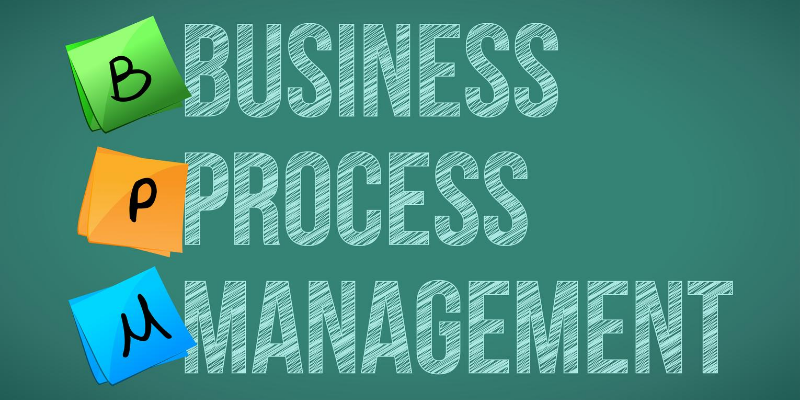Will e-commerce companies (n)ever make money?
I recently read three interesting sets of news items relating to the e-commerce scene in India.
The first set reported the financials of major Indian e-commerce firms for 2014-15 and it seems things are not as bad as I envisaged. In fact, they are worse. Without exception, losses have mounted faster than sales have grown and margins remain unclear.
The second set was an announcement by the founder and CEO of a leading Indian e-commerce firm that his company would become profitable in three years from now. The same CEO had made the same announcement two years ago, a change in the year when profitability would be achieved. Another e-commerce CEO suggested that in a fast-growing market, growth is the only metric worth going after. In other words: we cannot waste time trying to make money now, when customers are falling over themselves to shop with us, but we will think about it later when there maybe other competing and superior alternatives available. Sounds strange to me.

The third news item mentioned that baked cow dung can now be ordered online at leading e-commerce sites suggesting that at least one merchant out there is able to see through the bullshit (pun intended).
After years of burning through billions of dollars, one would expect Indian e-commerce firms to start making money but the question now is not when but if these firms would ever turn profitable?
Of infinite and finite supply
Online retailers need to tick at least one of two key boxes (ticking both would be great) before they can think of profitability: differentiation and reliability.
All leading horizontal Indian e-commerce sites sell the same stuff from the same merchants to the same customers at the same prices. With no difference in merchandise, companies resort to varying the prices through discounting to attract shoppers, thus making the business unsustainable. Unless e-commerce firms start to differentiate their offerings significantly from each other, I do not see things improving. There are sporadic exclusive deals on everything from Maggi to Moto G, but these are not good enough for long-term sustainability, especially if these deals need mass media support to get off the shelves. Focus on specific categories would have helped, but sooner or later, everyone who starts out selling one category quickly adds every other category and after a while all sites (or to be more with the times), all apps look the same.
Lack of differentiation among horizontal sites creates an additional challenge. Suppose Amazon and Flipkart estimate a few hundred thousand customers will buy the latest Chetan Bhagat book, but the number of shoppers actually doubles. The publisher can produce or procure the additional copies without any issue. The same logic holds true for Samsung phones, Apple iPads, Prestige cookers, Puma shoes, Biba tops, Titan watches and any other general merchandise because online sales, despite the hype, is still a small percentage of the overall sales of these items. In other words, stock is never a problem. I call this the unlimited supply theory. This game will end when capital runs out.
Contrast this with the battle for the taxi-hailing market. If I am standing on M G Road and hailing a cab, my experience will be determined by the supply of cars available with the cab companies at that point. If Uber has better supply, the ETA will be lower, cabs will arrive faster and the rider experience will be better. Ola cannot address this problem by having a limitless number of vehicles on road because there can only be so many cars, roads and drivers and stock is finite. Infinite supply of cheap capital cannot solve this problem. Over time, most riders, cars, drivers will start moving to one platform (say) Uber who will then dominate the market. This is the limited supply theory. This game will end when supply runs out.
The law of diminishing margin
At the other end of the spectrum are vertical speciality sites that sell only furniture, spectacles/sunglasses or women’s lingerie, but scale is a problem. These could be good niche profitable opportunities (and I cannot argue against profitable enterprises irrespective of size), but once the horizontal sites make a play for this business (which they are already doing), pressure on margins will mount and vertical sites will always lose out on mass traffic.
Food and grocery is still an underserved area but I am not convinced about the prospects of hyperlocal businesses like Grofers or Peppertap. They don’t seem to be adding any genuine value to consumers and Grofers has already started selling everything else, which means there is no difference from the standard horizontal e-commerce sites. In fact, I am amazed how “businesses” like these raise so much money to burn. The spate of employee sackings and office closures indicates huge pressure on these entrepreneurs from investors to do more with less, and things will only get worse. Big Basket has an inventory model for grocery, but this is a low-margin, high-volume business; unsold/damaged inventory will hurt. And now that Amazon and Flipkart are entering this space, non-existent margins can only go south. Private labels can help but cannot solve this problem completely because it will always be a small part of the overall sales mix.
Medicine and online pharmacies are also underserved, but the regulatory environment is a restriction even though several startups are testing the waters. Similar challenges exist for wine and spirits as well. Surely there are other underserved areas to focus on outside of low margin mobile phones.
Differentiation vs efficiency
A fine example of differentiation is IRCTC. Sure, they do benefit from the exclusivity of the Indian Railways but it’s the principle of the thing. If you retail unique products or items that cannot be easily replicated by competition, you give yourself a great chance of building a sustainable venture. And yes, before you ask, IRCTC is an old-fashioned business. It makes money.
If category differentiation is not possible, e-commerce sites must offer customers (who are being acquired at high costs) a great experience through high levels of operational efficiency and earn their loyalty. They must become boringly reliable, and in this regard, Amazon is now pulling ahead leaving competitors like Flipkart, Snapdeal and Paytm behind. Recently, just before the festive season, Snapdeal announced that they will process all refunds within one hour. A high number of refunds indicates poor operational efficiency. Customers want to get the ordered items delivered perfectly on time but no shopper anywhere in the world ever went online so that they can get refunds quickly.
Here’s a hilarious incident that brings out the concept of boring reliability. Recently in Maryland, US, a robber robbed a store of cash at gunpoint, walked out and got himself an Uber as a getaway vehicle. He was of course tracked, trapped and arrested and it is not clear if he hailed a cab before or after the robbery since ETAs are low but just imagine how boringly reliable the Uber service must be!
- With no differentiation and falling customer experience, Indian e-commerce firms find themselves in a difficult situation with just two options available to them:continue to raise boatloads of easy money because there is always some “smart” investor in the world willing to throw away good money or
- take a hard look at their business model and do what is required to make it sustainable.
As the music slows down, and the party starts winding up, it looks like the easy way is going to become harder and the hard way may be the only way out.
Thankfully, all is not lost. E-commerce firms can still take some specific steps towards profitability.
The path to profitability
Before we look at these steps, let me first clarify what I mean by profitability. Profits mean net profits. After everything. Not before anything. There is nothing called operational breakeven. Profitability is like pregnancy. Either you are. Or you are not. There is nothing in between. “Operational breakeven” is just a euphemism for losses. Now for the specific actions.
Loss making e-commerce firms can drive towards profitability by either
- pushing up gross margins or
- reducing costs.
Given the frightening state of affairs (2014-15 e-commerce losses seem to be in excess of Rs 8,000 crores), firms have to do both simultaneously to give themselves some chance of becoming profitable. Here are five ideas to start with.
1. Push up gross margins The formula for gross margins is (post discount sale price - purchase price - shipping - packaging - payment gateway/CoD charges). Companies using any other method to calculate gross margins are only fooling themselves. Smart category teams must extract every single per cent available in the supply chain to meet this goal of improving gross margins. As a follow-through, discounts must be drastically reduced and no item should sell at negative gross margins except specific traffic drivers or loss leaders to drive retail buzz.
2. Reduce or preferably stop cash on delivery (CoD) CoD is not only a pain to manage but also expensive for merchants and it knocks out the convenience factor for customers from online shopping. In fact, e-commerce sites have only succeeded in moving millions of credit/debit card users who would have otherwise paid online to pay by CoD. I cannot believe CoD is touted as the innovation for Indian e-commerce because card penetration is limited. This is not true. Less than 10 per cent of over 500 million credit/debit card holders in India shop online, so it is possible for e-commerce firms to go only plastic and still have a large untapped market (around 450 million users and 9X the current online shopping base of customers) to target.
3. Slash headcount A simple rule when you decide to let go of people is to cut deep. Small cuts never help. If you cut workforce by 10 per cent, the remaining 90 per cent is insecure, worried, unproductive, and typically another cut of 25 per cent will shortly follow making things worse. Given the high manpower costs at some of these firms, I would cut the workforce by 50 per cent. If you are not sure which 50 per cent to remove, just let go of the other half. You don’t need them. The remaining team will deliver much better financial results.
4. Stop advertising, especially mass media It makes no sense to hire Bollywood celebrities to peddle deeply discounted, me-too, no/low-margin items through front page print ads and TV commercials. Instead, continue to significantly invest in digital advertising.
5. Stop wastage I have a simple thumb rule for startup expenses till they break even. Invest significantly into anything the customer sees or experiences. So investing into great systems, processes or technologies that impact customer experience is critical but spending on (say) luxurious workspaces with original Monets displayed inside and hand painted toilets is terrific for PR, but terrible for finances.
The immediate impact of these actions will be a drop in sales. Not just a small cut but a massive drop, maybe even up to 50 per cent or more because, in reality, these were not sales so far. Combine this with a steep headcount cut and suddenly the two biggest talking points e-commerce firms have used to drive their impressive PR machinery over the years – GMV and headcount – will start losing their allure and I am not sure the founders/managements can digest this.
Therefore, I think e-commerce companies will continue to do more of the same, which is to keep raising more and more money, even at down rounds, a distinct possibility going forward, and keep offering deep discounts to lure customers and this is just a mug’s game. Unfortunately for them, this will provide Amazon the perfect opening to get ahead and start dominating the market. To beat Amazon, e-commerce sites in India have to do something different; however, raising capital to fund discounts will not work because Amazon can out-fund and out-discount them in this game even with Softbank, Alibaba and Tiger on the other side.
For sure, with so much money already ploughed in, it will not be easy for investors to suddenly pull the plug, but neither can they continue to invest without end in unsustainable enterprises. This is like holding a tiger (no pun intended) by the tail.
Which leaves them with one final throw of the dice.
Strength in numbers?
Do not be surprised if the big bucket investors in Flipkart, Snapdeal and Paytm like Tiger, Alibaba, and Softbank get together and create a single entity like Paykartdeal or somethingelse.com to take on Amazon. Or something like Grabtaxi, Didi Kuadi (who themselves came together in China earlier), Ola, and Lyft coming together globally to battle Uber.
Unfortunately, such force fit alliances are always a “game of chance” and born out of weaknesses instead of strengths and all Mahagathbandhans will not always deliver results like the Bihar elections! Putting together several unicorns will not create one large unicorn, but make it more vulnerable because of two factors: (1) Amazon now has to deal with just one competitor instead of a few, making their task easier and (2) the new bigger unicorn still has to tick the same old boxes to win: differentiation and reliability.
In other words, while the easy way will become hard, the hard way will not be easy either.
(Disclaimer: The views and opinions expressed in this article are those of the author and do not necessarily reflect the views of YourStory)








![[Funding alert] HomeLane raises Rs 60 Cr from Stride Ventures, existing investors](https://images.yourstory.com/cs/wordpress/2017/08/Srikanth-Iyer-Co-founder-CEO-of-HomeLane.jpg)


